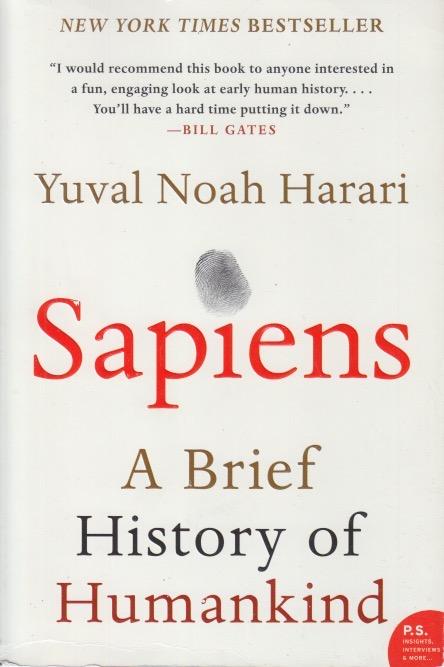
Sometimes you need some distance to appreciate an object. A telescope may be required if it’s a distant subject, like a rare comet (if the skies aren’t perpetually cloudy). At other times a microscope is more helpful. Yuval Noah Harari Sapiens: A Brief History of Humankind made a pretty big splash a few years back. Big name people, who presumably don’t have the time to get into the historical weeds—and yes, it’s quite overgrown out here—blurbed the book and it made it onto the New York Times Bestseller list. It’s not a little book, and like most such works it’s a synthesis that historians approach with trepidation. Such projects occasionally make great observations, like the astronomer with her telescope. But those who look up from their microscopes often say, “well, that’s not exactly right.”
How do you summarize 2.5 million years or so? You have to be very selective and you have to keep backing up to pick out the things that help this story make sense to you. Harari (my autocorrect keeps wanting to make him Harris, which sort of fits his overall thesis) divides human history into four parts, generally revolutions: the cognitive revolution, the agricultural revolution, the unification of humankind, and the scientific revolution. Along the way he tries to pick out the major developments. One of them, of course, is religion. While some of the details are overstated, his big picture here is helpful to read. Religion has helped us, but it’s also hurt us. Perhaps the latter more than the former. For this we need a microscope.
His part on science and the economy was both insightful and disturbing. I don’t believe, for example, that capitalism is necessary for advancement. We too quickly claim that socialism doesn’t work without ever really giving it a fair trial. Instead we let wealthy industrialists come up with new ways to keep us entertained and compliant while they handle all the money—leave it to the big boys. The future comes to resemble them. And we’ve seen where that gets us. Summarizing a big book like this that covers many thousands of years isn’t a straightforward or easy task, just as trying to pick out the highlights of our history can’t be. Part of the problem is that we’re still in the middle of it. Things may happen—the Covid-19 pandemic is a notable example—that change the course of the river. Since this book was published before that happened, who’s to say that things might not turn out quite differently than anticipated? This is a provocative book, but I need to get back to my microscope.
